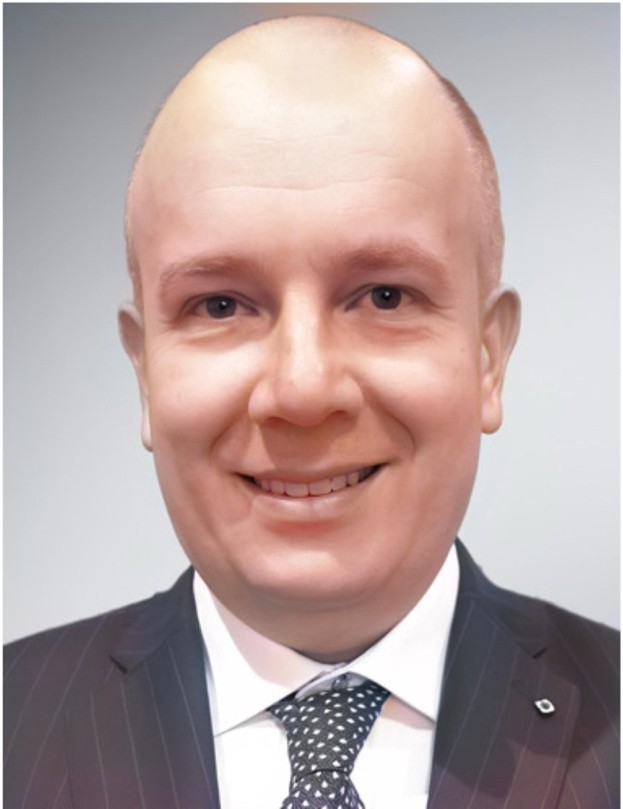19 - 24 April, 2026
Dublin, Ireland
March 30 - April 4, 2025
Stockholm, Sweden
Keynote and Invited Speakers
Keynote speakers
Christopher Holloway
Dr. Christopher Holloway is a NIST Fellow and an IEEE Fellow and has been at NIST for over 25 years. He is also on the Graduate Faculty at the University of Colorado at Boulder. He is an expert in electromagnetic theory and metrology, quantum-optics, Rydberg-atom systems, atom-based sensors, and quantum-based sensors. He has a publication h-index of 69 with over 380 technical publications and has over 18,500 citations of his papers. He has 10 patents in various fields in engineering and physics. He is the Project Leader for the Rydberg-Atom-Sensor Project and is the Group Leader for the Electromagnetic Fields Group, both at NIST.
Rydberg Atom-Based Sensors: "Transforming Measurements and Detection of Radio-Frequency Fields and Time-Varying Signals"
Rydberg atoms offer unique properties for radio-frequency (RF) spectroscopy, enabling sensors that detect time-varying fields and communication signals without traditional antennas or front-end electronics. These atom-based devices replace conduction-electron antennas with vapor cells containing atomic-bound electrons, opening the door to new metrology tools with unprecedented accuracy.
Atom-based measurements have already transformed standards for length, frequency, and time, and recent advances aim to extend SI-traceable metrology to electric and magnetic fields. Rydberg atom sensors now provide direct SI-traceable measurements of electric fields and RF power, fueling rapid progress over the past decade and inspiring diverse applications such as field and power metrology, phase and amplitude detection, angle-of-arrival, spectrum analysis, plasma sensing, sub-wavelength imaging, thermometry, and even wireless video transmission.
A particularly promising application is the reception of time-varying signals. Rydberg receivers function as electrically small, broadband antennas—detecting and demodulating signals from kHz to THz with high dynamic range—while eliminating much of the conventional receiver front-end. Their capabilities will be important for future 6G systems, especially for calibrations above 100 GHz.
This talk will review the development of Rydberg atom-based sensing technology and highlight its expanding range of applications.
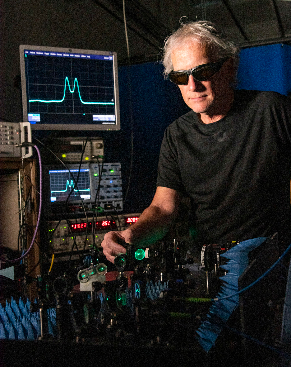
Clare Allen
Clare Allen is a specialist in the area of radiowave propagation and interference modelling with 25 years of experience in spectrum management at the UK communications regulator, Ofcom. Part of the RF Propagation team in Spectrum Group, Clare is involved in propagation research, provides advice on propagation modelling and undertakes sharing and coexistence studies in support of the efficient use of spectrum.
Clare has been an active member of ITU-R Study Group 3, Radiowave Propagation, since 2008. In 2020 she became Chair of ITU-R Working Party 3M responsible for Point-to-point and Earth-space propagation. At the 2023 Radiocommunications Assembly in Dubai Clare was appointed Chair of the ITU-R Study Group 3.
Advancing radio-wave propagation models by uniting international expertise
The global spectrum environment is undergoing rapid transformation, driven by growing demand from a wide range of services and emerging technologies. Radiocommunication Study Group 3 of the International Telecommunication Union (ITU-R SG 3) develops radiowave propagation prediction methodologies that empower spectrum managers and policymakers to make informed, data-driven decisions, supporting the efficient and equitable use of this finite resource.
Environmental factors such as terrain, land cover, and atmospheric conditions influence radio-wave propagation and should be adequately represented in prediction models. Integrating geospatial and meteorological data can improve the accuracy and reliability of predictions. However, as models become increasingly data-intensive, it is important to balance the richness and resolution of input data with computational efficiency to ensure that models remain both accurate and scalable.
To ensure these prediction methods effectively underpin the broader work of ITU-R Study Groups, particularly in preparation for World Radiocommunication Conferences, they must also be supported by high-quality, globally representative measurement data. Such datasets are essential for validating and refining prediction methods, enhancing their accuracy and applicability across a wide range of environments.
This paper reviews key areas of ongoing work within SG 3 Recommendations, highlights recent technical developments, and identifies priorities for future research and international collaboration.

Michael McLaughlin
Jobs were scarce in Ireland when Michael graduated from UCD in 1982 and he spent two years dividing his time between painting and decorating with his uncle “Dimmie” and writing code for a BBC Micro to do stock tracking and prescription labelling for pharmacies. He went on to work for Lake Datacomms (formerly Cornel Electronics) for 18 years. Then, after two years at Parthus Semiconductor, he decided to start his own venture, co-founding the microchip company Decawave in 2004. Decawave chips enable things and people to be located to millimetre level accuracy. It was the ideal application for Michael’s Ultra-Wideband (UWB) inventions and has led to UWB being incorporated in every new smartphone design and car keyless entry systems. Michael’s work was recognised by the Irish Academy of Engineering and he was awarded the 2019 Parsons Medal for outstanding achievement in Engineering Sciences. When Decawave was acquired by Qorvo in 2020, in Europe’s largest tech exit of the year, Michael became a Senior Fellow and Head of Algorithm Development in the Qorvo UWB division. Michael has been at the forefront in defining international telecoms standards with the ITU and the IEEE since 1989 and is the inventor of 103 international patents.
Think like a builder: A pragmatic approach to innovation
Theory is a powerful tool, but progress comes when we use it to build. This keynote introduces the concept of “thinking like a builder” — a pragmatic approach that applies first principles to create systems that solve real problems. As a central example, it presents the development of Complementary Zero-sum Cross-correlation (CZC) sequences, which resolve two seemingly conflicting requirements in channel sounding by achieving perfect channel estimation from a continuous periodic signal. The same practical mindset led to a new optimal convolutional code for IEEE 802.15.4a, fifty years after convolutional codes were first proposed. The talk advocates applying theory through construction, where understanding becomes capability and ideas become working solutions.

Invited speakers
Richard W. Ziolkowski
Richard W. Ziolkowski received the B. Sc. (magna cum laude) degree (Hons.) in physics from Brown University, Providence, RI, USA, in 1974; the M.S. and Ph.D. degrees in physics from the University of Illinois at Urbana-Champaign, Urbana, IL, USA, in 1975 and 1980, respectively; and an Honorary Doctorate degree from the Technical University of Denmark (DTU), Kongens Lyngby, Denmark in 2012.
He is currently a Professor Emeritus with the Department of Electrical and Computer Engineering at The University of Arizona, Tucson, AZ, USA. He was a Litton Industries John M. Leonis Distinguished Professor in the College of Engineering and was also a Professor in the College of Optical Sciences until his retirement in 2018. He was also a Distinguished Professor in the Global Big Data Technologies Centre in the Faculty of Engineering and Information Technologies (FEIT) at the University of Technology Sydney, Ultimo NSW Australia from 2016 until 2023. He was the Computational Electronics and Electromagnetics Thrust Area Leader with the Engineering Research Division of the Lawrence Livermore National Laboratory before joining The University of Arizona in 1990.
Prof. Ziolkowski was the recipient of the 2019 IEEE Electromagnetics Award (IEEE Technical Field Award). He is an IEEE Life Fellow, as well as a Fellow of OPTICA (previously the Optical Society of America, OSA) and the American Physical Society (APS). He was the 2014-2015 Fulbright Distinguished Chair in Advanced Science and Technology (sponsored by DSTO, the Australian Defence Science and Technology Organisation). He served as the President of the IEEE Antennas and Propagation Society (AP-S) in 2005 and has had many other AP-S leadership roles. He is also actively involved with the URSI (International Union of Radio Science) Commission B and the European Association on Antennas and Propagation (EurAAP).
Multipole Engineering: A Practical Approach to
Compact, High Directivity Antennas
Highly directive antenna systems are in demand to address the perceived needs of current and FutureG wireless systems and their applications. Practical alternatives to complex, power-hungry phased arrays for space-limited applications are truly desired. A potential approach is to develop and employ compact superdirective systems.
The concept of “needle” radiation was introduced by Oseen over 100 years ago. A number of theoretical papers then followed over the last half of the last century that discussed the interesting attributes of unlimited directivity, i.e., superdirectivity, from arbitrarily small source regions. Recent explicit solutions of Maxwell’s equations based upon vector spherical wave expansions confirm this notion. Unfortunately, the consensus in the electromagnetics (EM) community generally has been that superdirective systems are impractical for reasons such as very low radiation resistance/efficiency; very large sensitivity to fabrication and component tolerances; and extremely narrow bandwidths. Nevertheless, a turning point in the history of superdirectivity occurred early this century with a set of successes in which electrically small, two-element endfire arrays of electric elements were demonstrated to be superdirective. Several superdirective multi-element endfire arrays of a similar nature have been demonstrated using electric or magnetic dipoles in the last decade.
A more recent successful strategy to achieve superdirective performance has been to exploit mixtures of electric and magnetic multipoles. This multipole engineering paradigm has yielded unidirectional mixed-multipole antennas (MMAs) consisting of combinations of near-field resonant parasitic (NFRP) elements that are excited by simple driven dipoles and that exhibit multipole performance yielding superdirective performance. Their practical realizations address the concerns of efficiency, bandwidth, and fabrication/assembly tolerances. Superdirective endfire and broadside radiating systems have been demonstrated. Most recently, highly efficient, superdirective uniform circular arrays of unidirectional MMAs and MMA-excited multilayered-spherical dielectric lens antennas have also been realized.
The historical aspects of superdirective systems from the 20th century and the electromagnetics – both physics and engineering features – of the 21st century innovative realizations of practical superdirective systems will be reviewed. They encourage further superdirective research activities since they demonstrate that practical superdirective radiating systems are, in fact, achievable.

Christian Fager
Christian Fager received his Ph.D. degree from Chalmers University of Technology, Sweden, in 2003. He became a Full Professor at Chalmers in 2019 and currently serves as Head of the Microwave Electronics Laboratory. He has authored or co-authored more than 250 publications in international journals and conferences, making significant contributions to the development of linear and energy-efficient power amplifiers and transmitter architectures for wireless communication systems.
Dr. Fager has served as Associate Editor for both IEEE Microwave Magazine and IEEE Microwave and Wireless Components Letters. He is a member of the Board of Directors of the European Microwave Association (EuMA) and has been elected General Chair of the 2028 European Microwave Week to be held in Göteborg, Sweden. Dr. Fager is a Fellow of the IEEE.
Modeling and compensation of nonlinear effects in MIMO transmit arrays
The design of active antenna transmitters for highly integrated 5G/6G and sensing systems brings together a complex interplay of factors — from antenna radiation behavior and circuit nonlinearities to thermal interactions and digital signal design. Understanding and managing these interactions are key to unlocking the next generation of efficient and intelligent wireless systems.
In this presentation, we introduce a comprehensive yet computationally efficient multi-physical modeling framework that unifies communication/sensor signal characteristics, circuit behavior, antenna self- and mutual coupling, and radiation effects into a single framework for analysis and optimization. Building on this framework, we also explore advanced digital signal processing techniques for identifying and compensating these impairments.
A variety of simulations and experimental demonstrations will highlight the validity and practical use of the proposed methods, illustrating how such integrated modeling can accelerate the development of transmitters and antenna systems for future wireless systems.

Zhong Chen
Zhong Chen is the Chief Engineer at ETS-Lindgren, located in Cedar Park, Texas. He has 30 years of experience in RF testing, anechoic chamber design, as well as EMC antenna and field probe design and measurements. Mr. Chen is chair of the IEEE Standard 1309 committee responsible for developing calibration standards for field probes, and IEEE Standard 1128 for absorber evaluation. He is a member of the IEEE EMC Society Board of Governors and a former vice president of the Antenna Measurement Techniques Association (AMTA). He is serving as Vice-Chair of ANSI C63 (American National Standards Committee on EMC) and is the immediate past Chair of Subcommittee 1 which is responsible for the antenna calibration (ANSI C63.5) and chamber/test site validation standards. His research interests include antenna design and measurement, measurement uncertainty, data post-processing techniques for site validation and antenna calibration, and development of novel RF absorber materials. He has received recognition for numerous best papers at global conferences. Zhong Chen received his M.S.E.E. degree in Electromagnetics from the Ohio State University at Columbus. He may be reached at zhong.chen@ets-lindgren.com.
Compressed Sensing for Antenna Calibration in Extrapolation Ranges with Refined Physical Models
We demonstrate that antenna calibration in an extrapolation range can be significantly accelerated through reduced sampling and the application of Compressed Sensing (CS). In conventional extrapolation calibration, antenna responses are densely sampled as a function of distance from the near to quasi-far field, and the far-field gain is obtained by curve fitting to infinity. To mitigate multipath effects and enhance accuracy, the responses are typically smoothed using a boxcar moving average prior to curve fitting, thereby retaining the dominant antenna-to-antenna coupling while suppressing multipath contributions.
In earlier work, we showed that antenna responses in extrapolation ranges exhibit significant sparsity in k-space, enabling CS to accurately recover the main coupling response from as few as one tenth of the measurement points. A full calibration measurement regularly takes more than eight hours; this reduction in sampling can shorten measurement times by nearly an order of magnitude.
In this study, we extend this approach with a physics-informed preprocessing step. The measured complex response is first fitted to a more complete physical model based on Wacker’s generalized transmission equation, which incorporates higher order antenna-to-antenna coupling. Normalizing the data by this fitted model performs detrending directly in the complex domain, removing both amplitude and phase trends, and suppresses residual multipath terms in the spectral domain, thereby enhancing sparsity. This refined, physics-based complex-domain detrending improves CS recovery accuracy and could allow even greater downsampling in antenna calibration.

Lars Jacob Foged
Lars Jacob Foged received his M.Sc. in Electrical Engineering from the California Institute of Technology in 1990. He is currently Vice President of Research and Development at Microwave Vision Group (MVG).
He is a Fellow and Past President of the Antenna Measurement Techniques Association (AMTA) and received the AMTA Distinguished Achievement Award in 2017. Lars currently serves as Chair of the Antenna Standards Committee (ASC) of the IEEE Antennas and Propagation Society (AP-S). His involvement in the IEEE community also includes serving as Chair of the Industry Initiatives Committee (IIC) from 2016 to 2017 and contributing to the New Technology Directions Committee (NTDC). His efforts in bridging research and industry were recognized with the IEEE AP-S Industrial Innovation Award in 2023.
He served as Vice-Chair of the European Conference on Antennas and Propagation (EuCAP) in 2011 and 2022, and as Chair of the EurAAP Working Group on Antenna Measurements from 2009 to 2012. Since 2006, he has been an active contributor to the European School of Antennas (ESoA), where he serves as lecturer, course organizer, and board member.
Lars has authored two books and numerous peer-reviewed publications on antenna measurement techniques. His research has been recognized with Best Technical Paper Awards at AMTA (2013) and EuCAP (2021).
Plane Wave Generator Testing: Emerging Frontiers in Antenna and System Measurements
The Plane Wave Generator (PWG) concept has been utilized in antenna and device testing for over four decades. In recent years, it has gained renewed attention as a powerful alternative for evaluating antennas and integrated systems, particularly at lower frequencies where conventional Compact Antenna Test Range (CATR) and direct far-field methods become impractical or cost-prohibitive. This talk revisits the historical evolution of PWG technology and presents various implementations ranging from the VHF/UHF bands up to millimeter-wave frequencies. Recent advances in array design, calibration, and quiet-zone optimization are examined in detail. Special emphasis is placed on emerging applications in antenna and system-level testing, illustrating how modern PWG-based approaches are expanding the boundaries of direct far field and over-the-air measurement and validation.
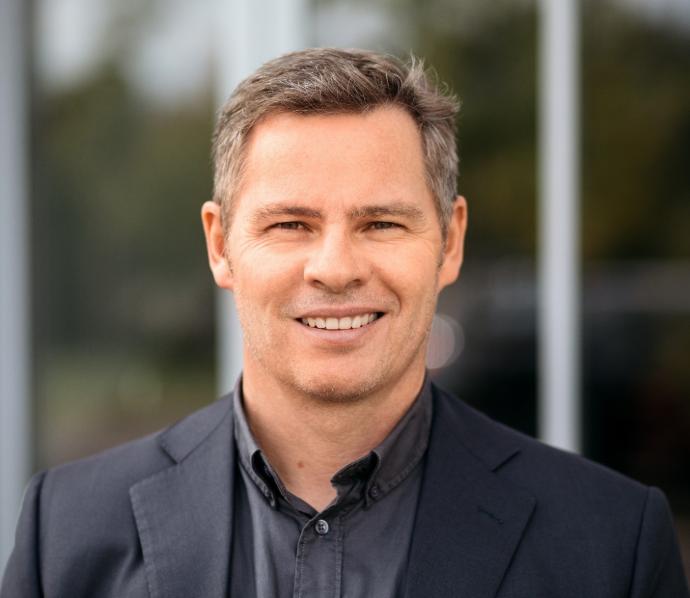
Ana Benarroch
Ana Benarroch received the M.S. and Ph.D.degrees in telecommunication engineering from Universidad Politécnica de Madrid (UPM), Madrid, Spain, in 1985 and 1990, respectively. Since then she has been a research collaborator with Information Processing and Telecommunications Center (IPTC, UPM), taking part in a number of research projects, including Europen Union research projects COST Actions COST255, COST280 and COSTIC0802. She has authored various technical articles in international journals and conference proceedings. She participates regularly in the meetings of the Working Parties of Study Group 3 (Radiowave Propagation) of the Radiocommunication sector of the International Telecommunication Union (ITU-R). Her main research interests are in the areas of radiowave propagation and radio meteorology. In recent years she has carried out studies on the behaviour of various parameters such as rainfall rate, raindrop size distribution (DSD), 0ºC Isotherm height and ERA5 cloud parameters.
Statistics of event and inter-event duration of rainfall events applicable for Mission-Critical Communications and disaster relief systems
We present statistical models for millimeter wave (mmWave) propagation in the frequency bands of 28 GHz, 60 GHz and 140 GHz. Uniquely, our models are based on a massive set of indoor, indoor-to-outdoor and outdoor measurements, obtained at multiple locations in diverse countries. Enabled by a custom design aimed at transportability, long battery life and quick deployment, our sounders are capable of acquiring a full angular power spectrum in 0.2 seconds with a resolution better than 0.5 degrees. We briefly describe the specific features of our sounders and then focus on the results of our measurement campaigns and the statistical path-loss models derived from them. We discuss various models, their physical justification, common features and the effect of rising frequency.
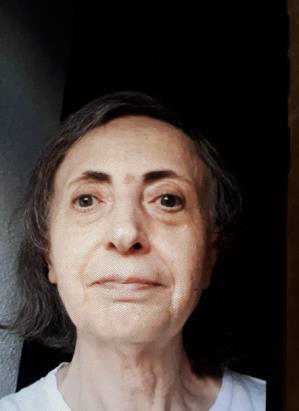
Balasubramaniam Shanker
B. Shanker received his B'Tech from the Indian Institute of Technology, Madras, India in 1989, M.S. and Ph.D in 1992 and 1993, respectively, from The Pennsylvania State University. From 1993 to 1996 he was a research associate in the Department of Biochemistry and Biophysics at Iowa State University where he worked on the Molecular Theory of Optical Activity. From 1996 to 1999 he was with the Center for Computational Electromagnetics at the University of Illinois at Urbana-Champaign as a Visiting Assistant Professor, and from 1999-2002 with the Department of Electrical and Computer Engineering at Iowa State University as an Assistant Professor. From 2017, he was a University Distinguished Professor (an honor accorded to about 2% of tenure system MSU faculty members) in the Department of Electrical and Computer Engineering at Michigan State University, and the Department of Physics and Astronomy. Currently, he is a Professor and Chair of Electrical and Computer Engineering at The Ohio State University. From 2015-2018, he was appointed Associate Chair of the Department of Computational Mathematics, Science and Engineering, a new department at MSU and was a key player in building this Department. Earlier he served as the Associate Chair for Graduate Studies in the Department of Electrical and Computer Engineering from 2012-2015, and currently is the Associate Chair for Research in ECE. He has authored/co-authored around 450 journal and conference papers and presented a number of invited talks. His research interests include all aspects of computational electromagnetics (frequency and time domain integral equation based methods, multi-scale fast multipole methods, fast transient methods, higher order finite element and integral equation methods), propagation in complex media, mesoscale electromagnetics, and particle and molecular dynamics as applied to multiphysics and multiscale problems. He was an Associate Editor for IEEE Antennas and Wireless Propagation Letters (AWPL), IEEE Transactions on Antennas and Propagation, and Topical Editor for Journal of Optical Society of America: A. He is a full member of the USNC-URSI Commission B. He is Fellow of IEEE (class 2010), elected for his contributions to time and frequency domain computational electromagnetics. He has also been awarded the Withrow Distinguished Junior scholar (in 2003), Withrow Distinguished Senior scholar (in 2010), the Withrow teaching award (in 2007), and the Beal Outstanding Faculty award (2014).
Computational Electromagnetics; past, present and future (?)
The solution to Maxwell’s equation has been the basis of a slew of development over the past eight decades. These range from early radar systems to modern applications that are capturing imagination of engineers today: wearable sensors or antennas, antennas and sensors for driverless vehicles, threat detection scanners, non-invasive medical devices, advanced electromagnetic (EM) and acoustic materials. In exploring these applications, the state of art has advanced to an extent that it computational electromagnetics has become a routine part of the design eco-system. Indeed, more often than not, it is not uncommon for designers to ask whether measured data agrees with HFSS, a simulation software. It was not always this way. A couple of decades ago, the state of art of simulations was at its infancy. Problem that could be solved were electrically small and geometrically not sophisticated. The gradual transformation of the state of art happened in late 1990’s. The transformation was largely driven by both advances in computational horsepower as well new algorithms. In concert, we have achieved remarkable capabilities. That said, the richness of our electromagnetic environment implies that there are a range of problems that are still beyond the reach of our simulation capabilities. Challenges arise due to increase in frequency, behavior of materials at these frequencies, shape and topology optimization, transient physics, multi-physics challenges, packaging in relation to new circuit architectures, and so on. In this talk, I will walk through some the grand challenges (biased perspective, of course) that the community has overcome and our group’s role in these efforts. I will also diverge onto interesting intellectual forays into the intersection of computer graphics and computational electromagnetics as well as particle in cell methods for plasma physics.
I will walk through some of the interesting topics that our group has embarked upon as well as pose a set of open interesting problems.
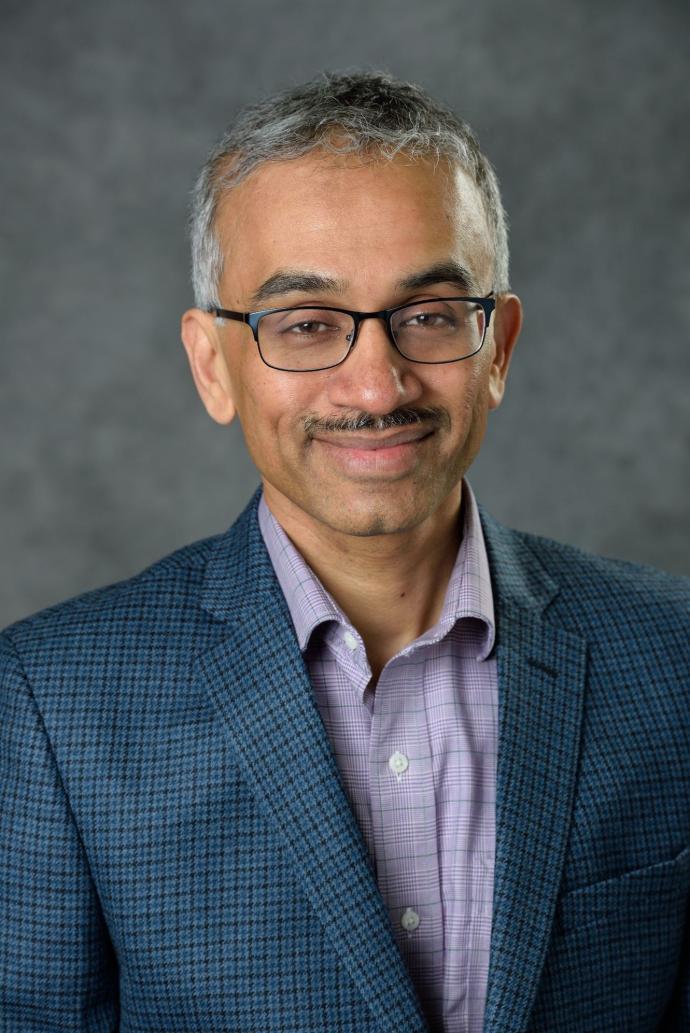
Naoki Shinohara
Naoki Shinohara received the B.E. degree in electronic engineering, the M.E. and Ph.D (Eng.) degrees in electrical engineering from Kyoto University, Japan, in 1991, 1993 and 1996, respectively. He was a research associate in Kyoto University from 1996. From 2010, he has been a professor in Kyoto University. He has been engaged in research on Solar Power Station/Satellite and Microwave Power Transmission system. He is a Fellow of IEEE and URSI, IEEE MTT-S elected AdCom member (2022-2027), IEEE MTT-S Technical Committee 25 (Wireless Power Transfer and Conversion) former chair and member, IEEE MTT-S Standard Committee chair, IEEE MTT-S MGA (Member Geographic Activities) Region 10 regional coordinator, IEEE WPT Initiative member, IEEE Wireless Power Transfer Conference & Expo founder and Steering committee member, URSI commission D (Electronics and Photonics) former chair, the first chair and technical committee member on IEICE Wireless Power Transfer in Japan, Japan Society of Electromagnetic Wave Energy Applications former president and adviser, Space Solar Power Systems Society president, and was IEEE MTT-S Distinguish Microwave Lecturer (2016-18). He was the recipient of the 2025 IEEE Microwave Magazine Best Paper Award, the 2023 IEEE Journal of Microwaves Best Paper Award, the 2022 Award of Minister of Education, Culture, Sports, Science and Technology in Japan, and the 2023 IEICE Achievement Award in Japan, etc. His supervised students were the recipient of 100 awards from 2011 to 2025. He has been author of over 150 reviewed journal papers, over 130 keynotes and invited speakers in international conferences, and over 120 the other invited speakers including 55 DMLs. He has collaborated with totally over 150 companies for the WPT and microwave applications in 30 years. He is the co-inventor of 35 patents and 20 submitting patents. He has worked to harmonize academia and industry of the WPT. He organizes Wireless Power Transfer Consortium for Practical Applications (WiPoT), and Wireless Power Management Consortium (WPMc) in Japan as a chair from 2013 with over 40 companies to establish the WPT market and to encourage the WPT business. His books are “Wireless Power Transfer via Radiowaves” (ISTE Ltd. and John Wiley & Sons, Inc., 2014), “Recent Wireless Power Transfer Technologies Via Radio Waves (ed.)”, (River Publishers, 2018), “Far-Field Wireless Power Transfer and Energy Harvesting”, (Artech House, 2022), “Theory and Technology of Wireless Power Transfer: Inductive, Radio, Optical, and Supersonic Power Transfer” (CRC Press, 2024), and “Wireless Power Transfer: Theory, Technology, and Applications (2nd Edition) (ed.)” (IET, 2018 and 2014), and some English, Japanese, and Chinese translated text books of WPT.
Novel Beam Forming Antenna at Millimeter Wave for Advanced Radiative Wireless Power Transfer Business and for Sustainable Future
In 2022, ITU-R (International Telecommunication Union – Radiocommucation Sector) published Recommendation of Radiative Wireless Power Transfer (WPT). In the same year, Japanese government established new radio regulation of the radiative WPT at 920MHz, 2.4GHz, and 5.7GHz, respectively. Recently, a lot of start up companies of the radiative WPT produce various WPT products, e.g. battery-free IoT sensors, wireless charger for small electronics, etc. A sustainable society can be achieved by revolutionizing the way we use electricity by the WPT. The initial step is the advanced energy management by the battery-free IoT sensors and the final target is the Solar Power Satellite (SPS), power beaming from the space. Current WPT products are mainly for weak power and multi user applications in consideration with suppression of interference to conventional wireless applications and with safety issue for people. We need a novel beam forming technology to increase the receiving power at user and to suppress the interference when the transmitting power is increased. For the advanced WPT transmitter, the frequency should be increased in consideration with efficiency of both antenna and circuit and with cost. We, Kyoto University, developed novel low cost and high efficiency beam forming antenna at 28GHz for SWIPT (Simultaneous Wireless Information and Power Transfer). It is based on the waveguided antenna. In this talk, the current radiative WPT R&D and business status in the world and the novel beam forming technology for the advanced WPT business will be introduced. A future perspective of the WPT including the SPS will be also introduced.

Stefano Maci
Stefano MACI is a Professor at the University of Siena (UNISI). Since 2000, he has been P.I. of 10 research projects funded by the European Union (EU) and by the European Space Agency (ESA). He is a Fellow of IEEE since 2004. In 2004 he founded the European School of Antennas (ESoA), a PhD school that presently comprises 35 courses on Antennas, Propagation, and Electromagnetic Theory, and 200 teachers, among them 20 IEEE Fellow. He has been advisor of 40 PhD students. He has been former member of IEEE Antennas and Propagation Society (AP-S) AdCom, the Chair of the Award Committee of the IEEE AP-S, member of the AP Executive Board of IET (UK), Distinguished Lecturer of IEEE and of EurAAP. He was recipient of several prizes and awards, among which the EurAAP Award 2014, the Chen-To Tai Distinguished Educator award 2016, of the Shelkunoff Transaction Prize in 2015, and of the URSI Dellinger Gold Medal in 2020. He is presently Director of ESoA. He has been TPC Chair of the METAMATERIAL 2020 and and General Chair of EuCAP 2023. He was the president of the IEEE Antennas and Propagation Society 2023. In the last ten years he has been invited 60 times as key-note speaker in international conferences. His research activity is documented in 200 papers published in international journals, (among which 100 on IEEE journals), 10 book chapters, and about 450 papers in proceedings of international conferences.
Degrees of Freedom of the Field and Upper Bounds for the Number of MIMO
Massive Multiple Input Multiple Output (M-MIMO) technoology has significantly advanced base station antenna design by integrating many transceivers with antenna arrays, improving network capacity and managing complex interference dynamically. Advanced antenna modeling and theory are therefore essential today for the accurate prediction and assessment of system performance of next generation of communication systems. In this paper we propose a theoretical framework that emphasizes the joint design of system algorithms and antennas using exact electromagnetic (EM) field representations. This approach defines novel parameters for the quantification of antenna array performances, and defines design strategies to maximize the number of independent channels, the average efficiency, and the maximum average gain within a specific cell. By exploring the degrees of freedom (DoF) of the EM field, we establish the physical upper bounds for system performance, providing a comprehensive understanding of antenna potential.
The paper detail the Embedded Element Patterns (EEPs), their associate Efficiency Correlation Matrix (ECM), Cell Correlation Matrix (CCM), and orthogonal field modes, discussing the practical implications of these concepts for MIMO systems. The findings underscore the significance of sophisticated antenna models in enhancing network capacity, efficiency, and reliability. This research contributes to the optimization of antenna arrays in next-generation mobile networks.
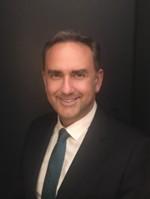
Christina Larsson
Christina Larsson holds a master’s degree in engineering physics and a PhD from Chalmers University of Technology, Gothenburg. She pursued postdoctoral research for two years at the Department of Physics, University of St Andrews, UK and spent four years at a startup focused on commercialization of nanowire technology for electronic and optoelectronic devices before joining Ericsson Research in Gothenburg in 2010. For the past 15 years, her work has spanned various aspects of radio propagation impacting present and future communication systems, including weather impacts on transport radio links, mm-wave coverage, and sub-THz propagation. The last years she has represented Ericsson as a 3GPP delegate, initially addressing updates to the 3GPP channel model for 6G and later covering study items on ISAC, integrated sensing and communication. Her research interests continue to cover most areas of propagation that influence radio performance.
Channel models in 3GPP for 6G, with an emphasis on ISAC, integrated sensing and communication
Before each new 3GPP generation a general update of the 3GPP channel models is needed to facilitate the foreseen new features and use cases in the coming generation. For 6G this work was carried out during Rel19 (2024-2025) We will summarize the major changes and additions to the 3GPP propagation model, TR38.901, and try to explain the rationale for the updates. One of the major updates was a totally new chapter covering ISAC, integrated sensing and communication. Due to the stochastic nature of the 3GPP model and ISAC typically requiring known ground truth values of scatterers for evaluations, the ISAC model has intrinsic limitations, we will try to clarify what the model includes and how it is supposed to be used.

Christina Larsson
Christina Larsson holds a master’s degree in engineering physics and a PhD from Chalmers University of Technology, Gothenburg. She pursued postdoctoral research for two years at the Department of Physics, University of St Andrews, UK and spent four years at a startup focused on commercialization of nanowire technology for electronic and optoelectronic devices before joining Ericsson Research in Gothenburg in 2010. For the past 15 years, her work has spanned various aspects of radio propagation impacting present and future communication systems, including weather impacts on transport radio links, mm-wave coverage, and sub-THz propagation. The last years she has represented Ericsson as a 3GPP delegate, initially addressing updates to the 3GPP channel model for 6G and later covering study items on ISAC, integrated sensing and communication. Her research interests continue to cover most areas of propagation that influence radio performance.
Channel models in 3GPP for 6G, with an emphasis on ISAC, integrated sensing and communication
Before each new 3GPP generation a general update of the 3GPP channel models is needed to facilitate the foreseen new features and use cases in the coming generation. For 6G this work was carried out during Rel19 (2024-2025) We will summarize the major changes and additions to the 3GPP propagation model, TR38.901, and try to explain the rationale for the updates. One of the major updates was a totally new chapter covering ISAC, integrated sensing and communication. Due to the stochastic nature of the 3GPP model and ISAC typically requiring known ground truth values of scatterers for evaluations, the ISAC model has intrinsic limitations, we will try to clarify what the model includes and how it is supposed to be used.

Ke Guan
Dr. Ke Guan is a Full Professor at the State Key Laboratory of Advanced Rail Autonomous Operation and the School of Electronic and Information Engineering, Beijing Jiaotong University. In 2024, he was elected a Life Fellow of the Royal Society for Arts, Manufactures and Commerce (Life FRSA). In 2016, he was awarded a Humboldt Research Fellowship. From February 2023 to July 2023, he was a Guest Professor at Technische Universitaet Wien, Austria. In 2025, He was selected as one of the “10 Leading Chinese Talents in Science and Technology in Europe” by the United Chinese Professional Associations in Europe. He is the major contributor of the clutter loss model in ITU-R P. 2108 and the THz channel model in IEEE 802.15.3d-2017. He has authored/coauthored two books and five book chapters, more than 200 journal and conference papers, and more than 20 patents. His current research interests include the digital twinning of electromagnetic propagation environments in various complex scenarios based on ray-tracing and machine learning. His project TwinSWAN won the 2024 IET Excellence and Innovation Awards. His papers received 14 Best Paper Awards, including the IEEE Vehicular Technology Society Neal Shepherd Memorial Best Propagation Paper Award in 2019 and 2022. He is Beijing Jiaotong University's contact person for 3GPP and ETSI and a member of the IEEE VTS Propagation Committee and the IEEE AP/S TC on Propagation and Scattering.
From GIS to CIR: HyperRT – An End-to-End Framework for Building High-Fidelity, Real-Time Wireless Digital Twins
Realizing the vision of smart ecosystems requires wireless digital twins that can generate highly accurate channel data in real-time across diverse scenarios. The core bottleneck lies in producing high-fidelity channel impulse responses (CIRs) at the same pace as the real network evolves. This presentation introduces HyperRT, a novel end-to-end framework that synthesizes ray-tracing (RT) and artificial intelligence (AI) to overcome this challenge. The solution addresses three fundamental issues: 3D environment model reconstruction, obtaining electromagnetic (EM) properties of medium, and high-efficiency high-fidelity channel generation. The process begins with the Geospatial-Electromagnetic Mapping Intelligence (GEMI), which autonomously tackles the first challenge by reconstructing the 3D geometrical environment. The second challenge is tackled by proposing a novel paradigm for obtaining the EM properties of multi-type media in realistic environments, which leverages a key implementation technology: multipath extraction using heterogeneous wave propagation data in multi-spectrum cases. HyperRT finally overcomes the third challenge of real-time, high-fidelity channel characterization. Its core employs a modular, heterogeneously-computing architecture with AI acceleration, achieving a triple optimization in algorithms, computing power, and data analysis. This approach results in an efficiency gain of 2–3 orders of magnitude compared to the high-performance ray-tracing platform CloudRT (jointly developed by Beijing Jiaotong University and Technische Universität Braunschweig), thereby completing the automated pipeline from Geographic Information System (GIS) data to the final CIR. Demonstrated in applications from 5G for Railway (5G-R) networks to Integrated Sensing and Communication (ISAC) channel data generation and intelligent applications, the HyperRT framework establishes a solid foundation for high-fidelity wireless digital twins. Future research will focus on further enhancing the intelligence and automation of the modeling process to fully realize a comprehensive digital replica of the wireless environment.
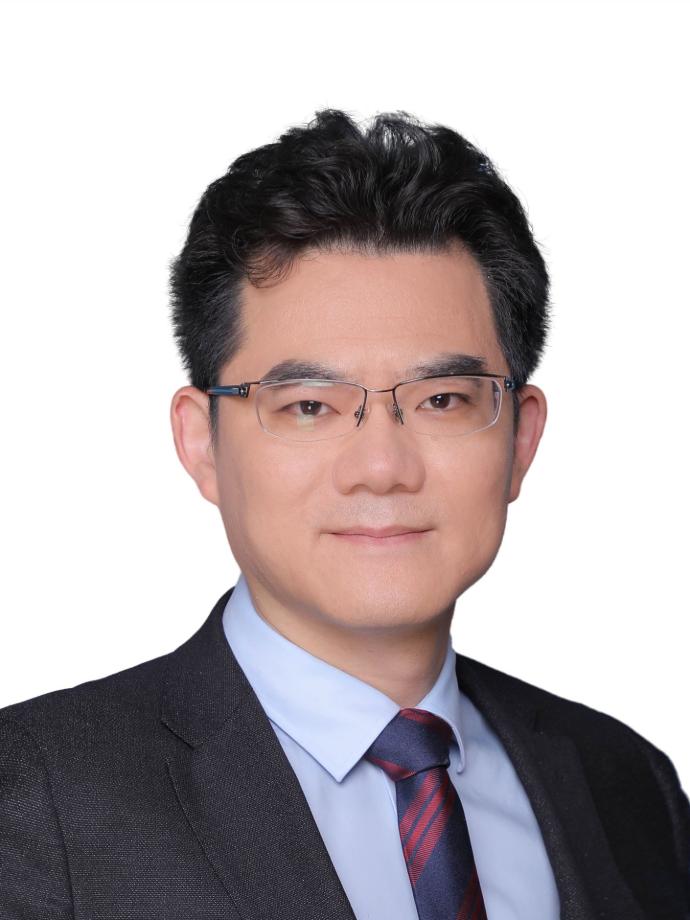
Filiberto Bilotti
Filiberto Bilotti is a Full Professor of Engineering Electromagnetics and the Director of the Antennas and Metamaterials Research Laboratory at ROMA TRE University, Rome, Italy.
His main research interests include: design of microwave antennas and arrays and modeling of artificial electromagnetic materials, metamaterials, metasurfaces, and their applications in wireless, short-range, satellite communications and radar systems. The research activities developed in the last 25 years has resulted in 750+ papers in international journals, conference proceedings, book chapters, and 3 patents.
Prof. Bilotti was the recipient of a number of awards and recognitions, including the elevation to the IEEE Fellow Grade for contributions to metamaterials for electromagnetic and antenna applications in 2017, the IEEE Antennas and Propagation Chen-To-Tai Distinguished Educator Award in 2023, the NATO SET Panel Excellence Award in 2016, the Finmeccanica Group Innovation Prize in 2014.
He was a Founding Member of the Virtual Institute for Artificial Electromagnetic Materials and Metamaterials – METAMORPHOSE VI in 2007, was elected President of this society for two consecutive terms from 2013 to 2019 and currently serves the METAMORPHOSE VI as the Executive Director. He hosted in 2007 the inaugural edition of the Metamaterials Congress, served as the Chair of the Steering Committee of the same conference for eight editions (2008–2014, and 2019), and was elected as the General Chair of the Metamaterials Congress for the period from 2015 to 2018.
He has been also serving as the Chair or a member of the Technical Program, Steering, and Organizing Committee of the main national and international conferences in the field of applied electromagnetics.
Metasurface-aided signal processing: new directions in communication and radar systems
In this talk, we will review our recent work on metasurface-aided signal processing for wireless communications and radar systems. By enabling real-time control of metasurfaces at microwave and millimeter-wave frequencies we demonstrate simplified architectures, reduced costs, and ultra-low latency, all crucial for next-generation technologies.
We will show how combining conventional antennas with intelligent metasurfaces creates a new class of smart antennas, enhancing coverage, supporting multi-channel operation, enabling near-zero-power IoT connectivity, and improving beam shaping and steering in satellite communications.
The talk will also focus on radar applications, where space-time-modulated metasurfaces directly perform advanced functions such as Doppler compensation, direction of arrival estimation, false-target generation, second/third harmonic generation – bypassing or dramatically reducing heavy digital processing and enabling analog operations at the speed of light.
Finally, we will discuss our recent findings in the field of time-varying metamaterials – including time interfaces, space-time interfaces, and slabs – which unlock advanced functionalities such as frequency conversion, and spatiotemporal beam control.
